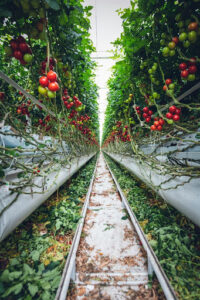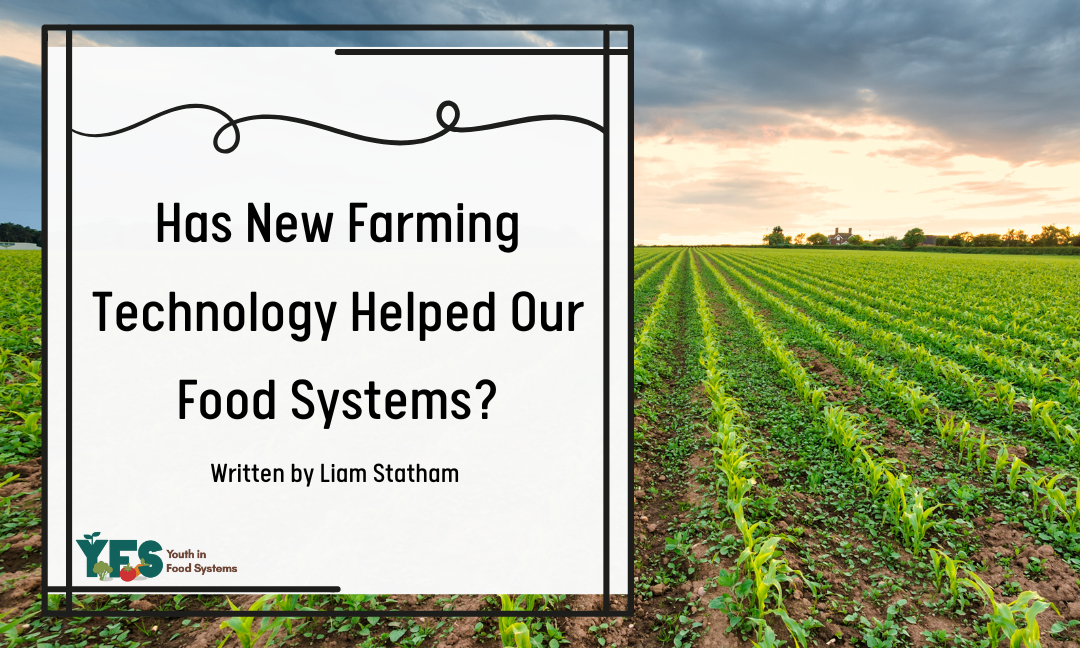Written by: Liam Statham
Edited by: Dhanika Botejue
Designed by: Eleanor Jeavons
Published by: Rayna Almas
In 2004, about 7.5% of Canadians were food insecure. In 2023, that number was almost 23%. Even before the COVID pandemic, food insecurity rates in Canada were increasing, with 13% of Canadians experiencing food insecurity in 2018. This continuous decline in food security despite significant advancements in agricultural technology forces the question: Has new technology really helped our food systems?

Accomplishments of New Farming Technology
Within the last century, the farming industry has had numerous technological advancements, ranging from vertical to precision agriculture. These new technologies have undoubtedly increased crop yield; from 1990-2019, global agricultural output more than doubled.
Furthermore, advancements in biotechnology have resulted in genetically modified crops that are more resistant to pests and diseases, further increasing crop yield and farm productivity.
Modern farming technology has also led to decreased use of water, fertilizer, and pesticides, and has reduced farming’s impact on natural ecosystems.
The Problem
While modern farming has improved the agricultural industry in many ways, it fails to solve the root causes of food insecurity: accessibility and affordability. In a study conducted by World Food Program USA, they found that “there is no global food shortage because we produce more than enough food to feed everyone in the world.” Clearly, the problem is not agricultural output, which is the main problem modern farming technologies attempt to “solve.”
Conclusion
In conclusion, despite the numerous advantages and opportunities that new farming technology offers, it is still unable to address the true issues of our food systems. The true causes behind food insecurity, accessibility and affordability, cannot be addressed by simply increasing the agricultural yield. Solving these issues requires many important changes such as reducing food waste, fixing economic disparities, and putting an end to unequal distribution of goods. These are large, global issues that technology will not be able to fix. Therefore, new technology, at least by itself, will not fix our failing food systems and has not helped them until this point.
Resources
https://www.nifa.usda.gov/topics/agriculture-technology
https://ccafs.cgiar.org/news/pros-and-cons-emerging-technology-our-food-system
https://proof.utoronto.ca/food-insecurity/
https://www150.statcan.gc.ca/n1/pub/82-625-x/2020001/article/00001-eng.htm
https://www150.statcan.gc.ca/t1/tbl1/en/tv.action?pid=1310083401
https://www150.statcan.gc.ca/t1/tbl1/en/tv.action?pid=1310046201
https://www150.statcan.gc.ca/t1/tbl1/en/tv.action?pid=1310047201
Photo by Markus Spiske on Unsplash

